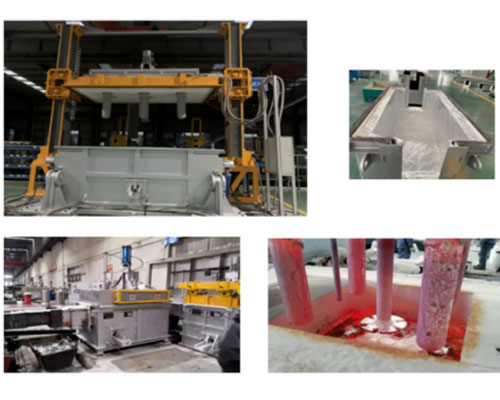For the non-metallic inclusions of aluminum melt, it mainly refers to aluminum oxide. Its properties are dense and tough. Whether in solid or liquid state, it is easy to form a solid protective layer tightly attached to the surface. When the aluminum oxide film is impacted in the molten state, it is easy to become a fine film and cause the greatest harm. Although the density of alumina can reach 3-4g/cm3, it is only 2.3-2.4g/cm3 at high temperature, which is almost the same as the density of aluminum solution. Therefore, they are actually in suspension in the molten aluminum melt. Once the oxidized slag is mixed into the cast-rolled strip through the solidification process, because it can neither be dissolved in the aluminum alloy, nor can it form an intermediate compound with other elements, it can only be distributed in the grain boundary of the crystal grain in a solid state, thereby destroying the crystal. Cohesion between particles. Due to the existence of this kind of oxidized slag that destroys the intercrystalline bonding force, it causes many harms, reduces the process performance during pressure processing, makes the metal layer during processing, produces cracks, makes the product strength unstable, and greatly reduces the elongation. Especially under impact load or vibration load, ductile fracture occurs, which affects the service life of the material.
Non-Metallic Inclusions of Aluminum Melt
During smelting, the oxide film is immersed in the melt, and some float on the surface of the aluminum melt or stick to the furnace wall, and those aluminum droplets and the surface of the melt are oxidized again, and the above-mentioned inclusions are also formed. If the body is mixed into the cast-rolled strip, it will cause defects such as slag inclusion and oxide film. It significantly reduces the mechanical properties and corrosion resistance of products. Therefore, in the continuous casting and rolling process, the melt must be refined and purified to effectively reduce the content of gas and inclusions, and ultimately produce high-quality sheet and foil. Therefore, the purification technology of aluminum melt is the main subject of research in modern countries. Its basic direction is to maximize the refining effect and improve the purity of the metal under the premise of preventing environmental pollution.

In order to reduce the contamination of metals by impurities, the following measures can be adopted: according to the different chemical properties of the smelted metal or alloy, chemically stable refractories should be selected; high-aluminum refractory linings should be used for aluminum alloys; new ones with higher purity should be used when possible To ensure the purity of certain alloys, low-sulfur fuels should be used in flame furnaces; all tools in contact with metal charge should be made of materials that will not bring impurities as far as possible, or the conversion alloy should be protected with appropriate coatings. The purity and performance of the alloy are required to clean the furnace; pay attention to the selection of auxiliary materials; strengthen the management of charge to prevent mixing.

